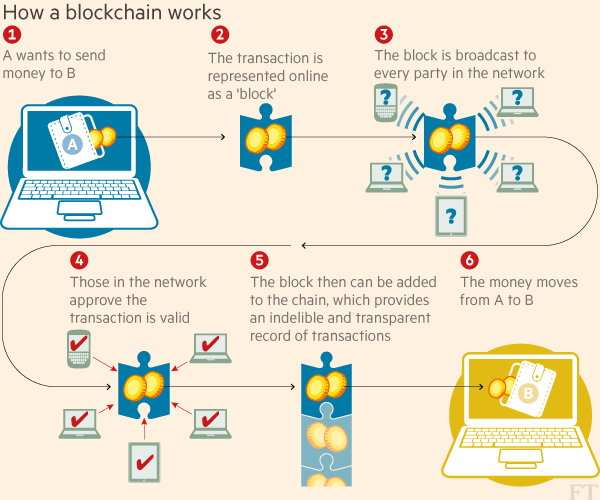How a blockchain works
The transactions are collected in blocks, which are found approximately every ten minutes in a random process called mining. As transactions transfer ownership of Bitcoin balances, each of these blocks represents an update of the user's balances on the network.
By following the blockchain from the Genesis Block and applying all transactions that were validated in each block in the correct order, you arrive at the current status quo.
As many miners compete to find the next block, often there will be more than one valid next block discovered. This is resolved as soon as one of the two forks progresses to a greater length, at which any client that receives the newest block knows to discard the shorter fork. These discarded blocks are referred to as extinct blocks (sometimes also referred to as orphaned blocks, although their complete ancestry is known).
When a transaction is submitted to the network, it is passed on peer to peer by all clients. Upon discovery miners will put it on their list of transactions that they want to verify and update the Merkle Root.
On Blockchain.info you can track a transaction either by requesting the page directly with the transaction hash
